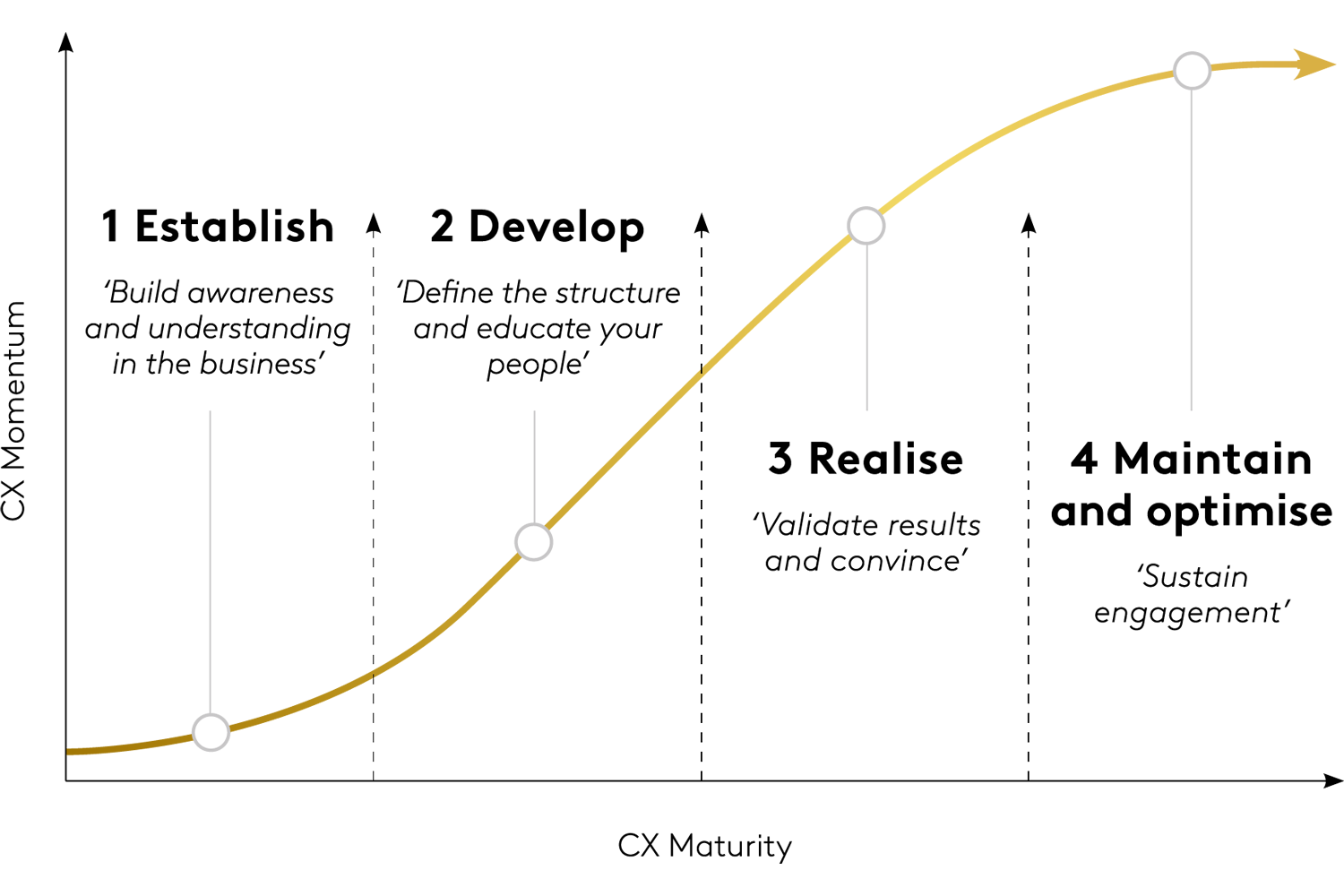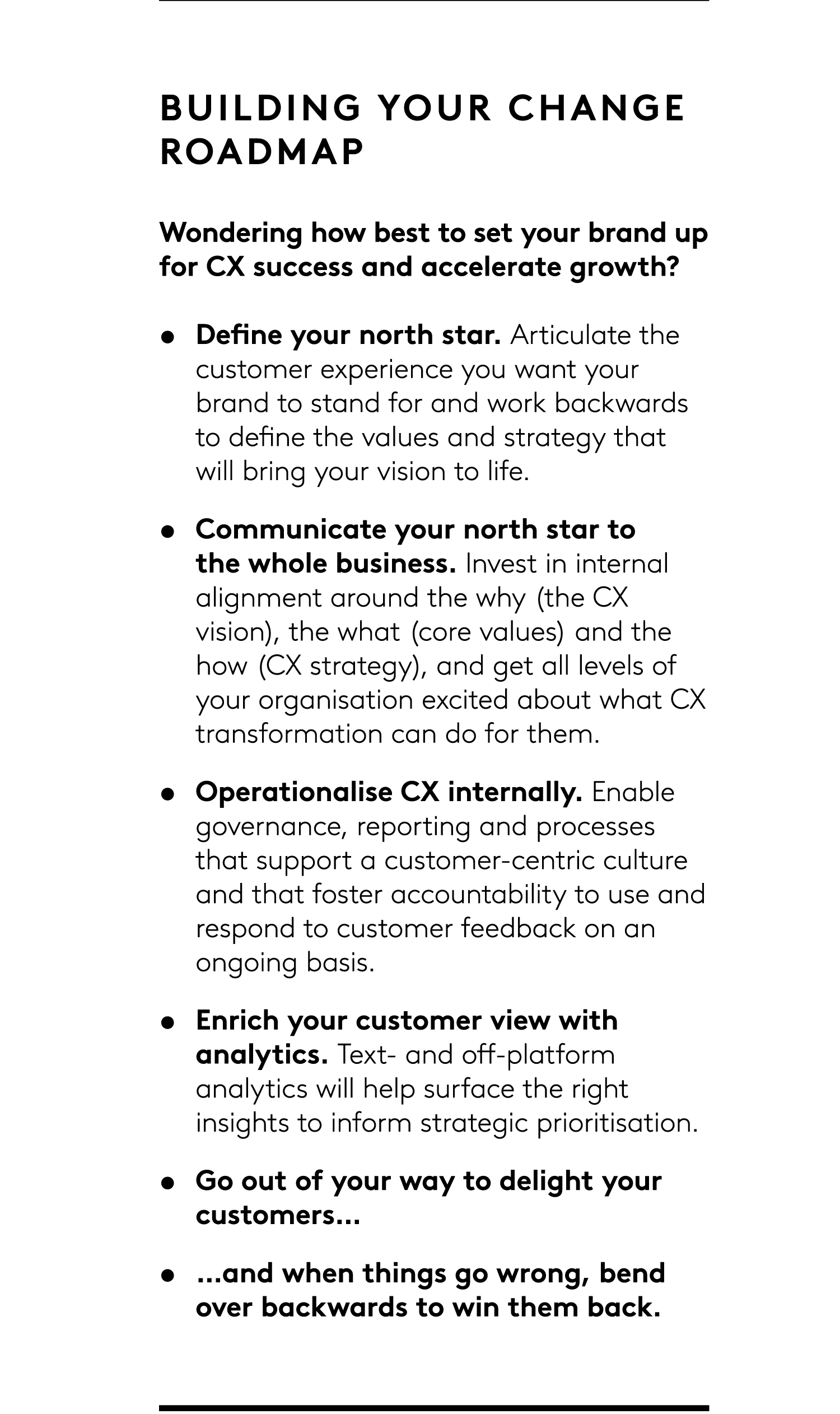Brands are no longer competing simply on the quality of their products and services. In a world where 60% of UK millennials prefer to spend their money on experiences rather than on ‘material things’, brands are also now competing on the uniqueness of the experience they deliver to customers.
In this context, customer experience (CX) has become one of the key differentiators in business today, unlocking huge growth potential for those brands that get it right. Or as Clayton Christensen, the renowned Harvard professor and management guru, puts it: “If we put in place experiences that the consumers need, that’s where differentiation occurs and that’s the place where the customers decide to buy my product vs. your product. It’s not by making a better product; this is very easy to copy.”
Mind the gap
It’s good news, then, that 91% of CEOs agree that customer centricity – making the customer experience as brilliant as it can possibly be – is essential for driving business growth. The less good news? Only 20% of customers rate these business leaders’ brands as being truly customer-centric.
Of course, this reality gap between brand vision and CX also represents an exciting opportunity. By working to align the brand promise with actual customer experience, businesses will begin to reap the lucrative benefits of being truly customer-centric.
The value of good CX
The most successful companies seek to surprise and delight their customers. Perhaps even more importantly, they do everything in their power to avoid disappointing customers by underdelivering on their brand promise. Why? Because they understand that great customer experiences have a direct impact on business value, driving both revenue and cost savings.
A great customer experience often explains why consumers choose one brand over another. It is something buyers are willing to pay more for; it can lead to customers buying more products from the same brand; and it is a reason customers choose to stay with a brand. Plus, when employees are trained to help, customers are 10x more likely to recommend. And the most successful companies understand that strong customer advocacy goes hand in hand, not only with customer base and market share growth, but also with brand value creation.
Use your CX programme as a driver for change
So given the compelling reasons for customer-centricity, why are so many brands falling short of meeting their customers’ expectations? The answer lies somewhere in between a company’s willingness to invest in a CX programme, and its failure to truly capitalise on opportunities to drive change.
CX transformation pays dividends, but it is not a quick win. Typically, the path to CX maturity takes two to three years, a period during which companies systematically go through four different phases:

One way of ensuring your CX programme does not stand still, is to take time in the development stages to make sure you are asking customers the right questions, in the right way, to get the data you actually need. Not having enough data is rarely the problem. The challenge is more about making the right decisions early on regarding the metrics you need to be tracking to maximise internal understanding, and ongoing accountability.
What data is the right data? First, employees need the right data tools to understand how they can better support customers - and, ideally, to see the impact their personal contribution is having. Business leaders, meanwhile, need to feel that the data is usefully informing strategic prioritisation, by quantifying the scale and value of different opportunities.
Only when data is democratised in this way – with straightforward supporting governance and processes in place, and links to business and personal performance writ large – will employees feel sufficiently engaged and motivated to play their part.
Focus on winning signature moments
Pioneering behavioural economist Daniel Kahneman often talks about how our “experiencing self” and our “remembering self” perceive happiness differently. We are quick to forget the majority of moments that make up our long lives. But changes, significant moments, and endings live on in our memories, and in the stories we tell.
For organisations, this insight holds two important truths. Firstly, focus on winning signature moments. If customers judge whole experiences based on their feelings either at peak moments or at the end of the experience, brands should invest time and resources in honing the experience and feelings they want their customers to have at these emotionally and financially critical moments. By creating the perfect moments, brands are in control of the experience and, more importantly, of the memory of the experience. Secondly, be relentless about turning negative customer experiences into positive ones. In a world where customers are choosier than ever, brands simply cannot afford to take their consumers’ custom and loyalty for granted.

Read more about creating unique and powerful customer experiences in the latest Kantar BrandZ global report and get in touch to find out more.


